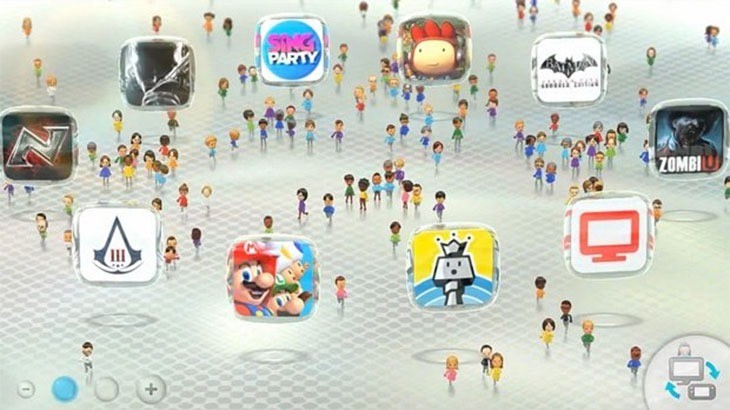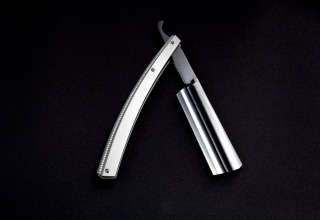The Tablet GamePad

The GamePad is not available separately (so don’t break yours!), though Nintendo’s promised games in future that’ll support two of the things. for now though, your multiplayer will be confined to using the Pro controller, or a combination of Wiimotes and Nunchucks – making this even more pricy for those who don’t own Nintendo’s last console because they’ll have to factor in the price of those accessories if they have any aspirations for that asymmetrical multiplayer that’s one of the system’s key features.
The GamePad’s 854×480 display is pretty far from being HD, but at its size, the differences in resolution are hardly noticeable, and you’ll only notice the odd bit of pixellation if you squint and stare really hard. It features a resistive touch screen, so it’s not particularly sensitive and doesn’t support multitouch or gestures, but there’s a laundry list of reasons for Nintendo’s choice in touch screen. If you’re busy holding the controller, just how in the hell are you going to touch the screen at multiple points anyway. I have dainty little woman fingers (though they’re covered in hair, so there’s still some semblance of masculinity) and had no trouble navigating the menus or scrolling through the console’s interface, though there is a hidden, housed stylus available should you require a little more precision.
The bad news comes in the pad’s pretty abhorrent battery life. According to Nintendo, you’ll get 3-5 hours of play from a single charge, but experience has me capping that at closer to 2-4 hours. You can play just fine with the charging cable plugged in, but that defeats the point of a wireless controller. It hasn’t affected me much. to be honest. I barely game for longer than 3 hours at a stretch, so it’s all too easy for me to just prop it up on that charging stand until the next round. If you regularly game for extended periods though, it could end up becoming a point of annoyance. It’s inexcusable too; the GamePad is so large, but so curiously light, and you can’t help but feel that Nintendo really could’ve stuffed a bigger battery in there.
Initial Set Up and interface

One you turn the console on, you’ll be required to pair the GamePad to the console and go through a short set-up procedure as well as create your identity for Nintendo’s new online-focused network. You’ll probably be tempted to select “South Africa” from the list of available territories, but doing so will shut you out of Nintendo’s eShop, barring you from Game and DLC downloads. It’s a better bet – and one suggested by Nintendo South Africa – to instead select the UK. Caveat Emptor though; the UK’s online shop is ridiculously pricy. New Super Mario Bros U, for example, retails locally in boxed form, for a shade over R500. That same game, digitally, is available from the eShop for £55, which by direct conversion works out to nearly R770. Ouch.
Once all that’s out of the way, you’ll be greeted by a rather large update. There’s a bit of confusion and squabbling about its size; some say it’s over 5Gb, others say it clocks in closer to 800mb. you have the option of refusing the update, which will allow it to download in the background while you play games, but in the interests of science I went and accepted it , resulting in me staring at the GamePad screen’s update bar for well over two hours, on a 8Mb connection. after it was done, I checked my bandwidth logs for the day, and my usage for the entire day was less than 2GB, so the 800’s have it. Still, that’s a monumental amount of time for a relatively small update, leading me to believe that the system uses some mighty strange ports. On that note, setting the unit up as an unrestricted DMZ in my router does seem to have sped things up considerably, though that could be down to the Placebo Affect.
Now you’ll notice that things are already a little different. On the Gamepad’s screen, you’ll find an interface that’ll be instantly familiar to 3DS owners. You’re presented with a series of neatly aligned shiny blocks from which you can launch your games and applications just by touching the screen. Neat.
On your larger TV, you’ll see what Nintendo calls WaraWara Plaza, bustling with those ubiquitous Miis, displaying what games the world at large has been playing, along with whatever delightful doodles they’ve sketched out on their GamePads. It’s worth pointing out that I’ve seen not one crude depiction of a phallus and its general accompanying set of hairy bollocks, because Nintendo’s been rather fastidious about keeping it all quite civil, and it shows. Everybody’s really quite nice, though probably not entirely by choice.
Navigating the menus is slick, fast and easy, but unfortunately, even after a second patch that’s meant to fix these things, loading up applications or even entering the system’s settings menu seems to take ages – with a couple of seconds going by before things become responsive. With the 1GB of memory that’s set aside for the system and its OS, that shouldn’t be happening.
Miiverse sits at the heart of Nintendo’s new online offering. It’s a sort of GameFAQ’s-styled, built-in message board that allows Wii U owners to discuss games, post strategies and tips, beg for help and leave some often exquisite stylus drawing. In addition, whenever you enter the Miiverse from within a game, it automatically captures a screenshot of your game as it stands, allowing you to post it on the Miiverse. In games that support it, like New super Mario Bros U, players can leave messages on the overworld map, with the system optionally prompting you to leave a message if you excel, or dismally fail a level.
It adds an odd, but curiously welcome level of social interaction to games that otherwise wouldn’t have them – and in many ways functions similarly to the message system you’d find in a game like Dark Souls, with other players able to help by offering tips, or hinder progress by hurling out red herrings. I’ve come to rather love Miiverse, happy to forget about Achievements, Trophies, and the often acerbic communities that you’d generally find on the other systems.
It’s once again worth pointing out that all of the system;s main applications – the Miiverse, the eShop, the fully functional tabbed browser, Notifications, Friends list and Wii U Video Chat can be accessed from the GamePad at any time, without having to quit your game. Press the home button, tap the screen, and you’re golden, with a second press of the home button picking you right up where you left off.
Last Updated: December 11, 2012
| Nintendo Wii-U | |
|
|
|
|---|---|





















